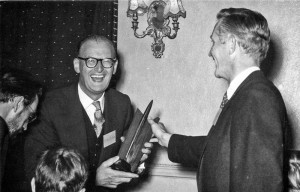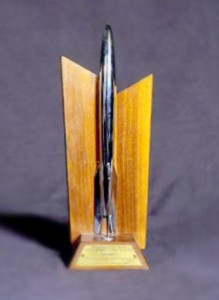Prior to discovering fandom I watched classic Star Trek in first run on NBC, so I made an appropriately envious audience for others’ stories about Gene Roddenberry attending the 1966 Worldcon in Cleveland and previewing the series’ two pilot episodes.
Those neofannish memories came rushing back when I read that Stuart Lutz Historic Documents of New Jersey was offering for $750 Gene Roddenberry’s letter to Worldcon chair Ben Jason affirming his plan to attend the convention. It’s typed on Desilu corporate letterhead — Desilu in green, Roddenberry’s signature in red, obviously more Hollywood’s than New York City’s notion of business correspondence.
The letter begins:
Thank you for your return letter. As it happened, I had an evening with Harlan Ellison and bride, got filled in on some of my questions regarding your September convention.
Incidentally, STAR TREK has been definitely bought by NBC and will appear on the air this fall, the exact premiere date to be determined but probably being in the second or third week of that month — at any rate, some time after the 24th World Science Fiction Convention.
Collectors of Ellisoniana would be interested, too. However, it looks like somebody has already snapped it up – a reproduction of the letter is still online but there is nothing about it being offered for purchase like there is for the rest of the dealer’s inventory.
[Via Bill Burns and Andrew Porter.]


